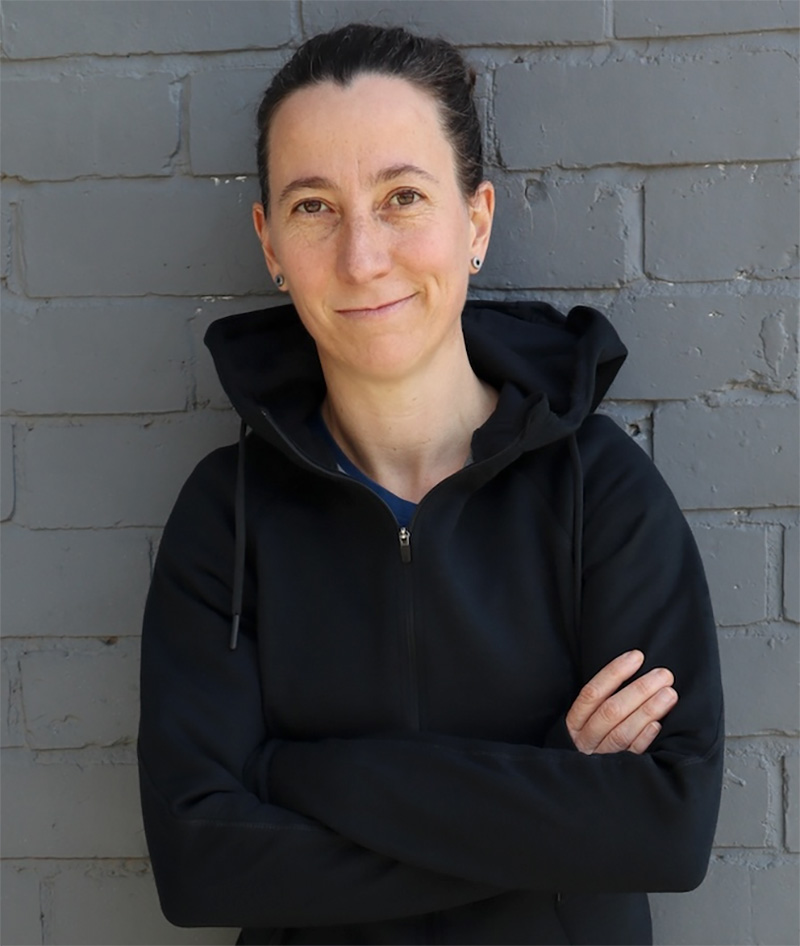Accredited exercise physiologist Marcelle Malan (with the help of Stephanie Glickman) looks at how a declining level of oestrogen due to the menopause can affect the structure and metabolic functioning of connective tissue.
The menopausal transition brings with it a range of physiological changes associated with the decline of female sex hormones, notably oestrogen and progesterone. While these two hormones are certainly not the only factors that affect change during this time, the sharp decline of oestrogen, in particular, has significant effects on tissues throughout the body, including connective tissues such as bone, ligaments, tendons and fascia.
The effect of declining oestrogen on bone is fairly well known and understood. Bone mass can decrease significantly through the menopausal transition, and post-menopausal women are at a higher risk of fractures compared to both pre-menopausal women and age-matched males. We also know that a declining level of oestrogen is associated with a number of changes to the structure and metabolic functioning of other connective tissues, such as ligaments, tendons and fascial tissues.
The primary building block of connective tissue is the protein collagen. Ageing in general is associated with a decrease in the amount of collagen in connective tissues (a decrease in collagen synthesis) and this loss seems to be greater in women than in men. This greater loss in women appears to be related, at least in part, to the precipitous drop in oestrogen levels post-menopause. Collagen loss has been shown to be attenuated in women who are receiving hormone replacement therapy (HRT).
This decrease in collagen synthesis can result in reduced size, thickness and resilience of tissues. How exactly this change in structure affects the loading and recovery capacity of connective tissue structures is not well studied in menopausal women, but evidence suggests a reduction in both tensile strength and metabolic recovery capacity. It is not clear exactly how much of this loss is due to age-related biological changes and how much is attributable to deconditioning, due to the generally lower levels of load-bearing exercise in older women. As with bone, age-related loss of function of musculotendinous structures is significantly attenuated through exercise and physical activity.
All available evidence supports active loading of tendons and ligaments for the maintenance of strength and function; however, the effect of load-bearing exercise on tendons, ligaments and fascial tissues specifically in post-menopausal women has not been extensively studied. For this reason, it is difficult to give evidence-based guidelines specifically for this population and exercise professionals are encouraged to follow strength-training guidelines, adjusted to the needs of the individual. Resistance training and load-bearing exercise should be a key priority for women at this stage of life and most types of loaded resistance exercise will be beneficial.
While load bearing should be applied globally, there are particular areas of concern for menopausal women that should be addressed in exercise programming. In this article, we look at some exercises for the pelvic floor, lateral hip muscles/tendons and the feet (plantar fascia).
Pelvic floor
The elasticity and resilience of pelvic floor connective tissues are negatively affected by the decrease in oestrogen at menopause, resulting in a higher incidence of urinary incontinence and pelvic organ prolapse. Even minor pelvic floor dysfunction – particularly stress incontinence – can be a significant barrier to load-bearing exercise, and it is therefore very important that fitness professionals are able to discuss pelvic floor health with menopausal clients. Clients with existing symptoms may require specialist assessment and exercise prescription for the pelvic floor.
Lateral hip
Lateral hip pain associated with gluteal tendinopathy and trochanteric bursitis appears to be more common in post-menopausal than pre-menopausal women. As the gluteus minimus and medius muscles are key contributors to lateral hip stabilisation, dysfunction and pain in this area can have a significant impact on day-to-day function. Including exercises specifically for lateral hip musculature along with global lower-body strengthening and motor control training is essential to help to maintain function and avoid pain.
Feet
While there is a dearth of research on foot function in post-menopausal women, anecdotal evidence suggests a greater risk of plantar fasciitis and dysfunction at the big toe joint (hallux valgus and bunions). The feet are often neglected in exercise programming; however, specific foot strengthening and mobility exercises can help to keep the feet strong and supple well into older age.
Huge thanks to both Marcelle and Stephanie who collaborated on this post – they both have a selection of educations on the FitPro Online Education platform.
Here is a list of their courses…
Pilates For Strength Training – Stephanie
Functional Strength for Ageing Populations – Marcelle
Pilates for Pregnancy – Stephanie
Exercise Strategy for Perimenopause to Post Menopause – Marcelle
Fundamental Matwork Pilates – Stephanie
Pilates with Props – Stephanie
Pilates for Hips & Shoulders – Stephanie
Intermediate Matwork Pilates – Stephanie
Are you a Pilates instructor looking for cover?
View our Pilates instructor insurance here.
References
- Frizziero A et al (2014), Impact of Oestrogen deficiency and aging on tendon: a review, Muscle, Ligament and Tendon Journal, 4(3): 324-328.
- Falconer C et al (1996), Changes in paraurethral connective tissue at menopause is counteracted by estrogen, Maturitas, 24: 197-204.
- Ganderton C et al (2018), Gluteal loading versus sham exercise to improve pain and dysfunction in post-menopausal women with greater trochanteric pain syndrome: a randomised controlled trial, J Women’s Health 0(0): 1-15.
- Guidozzi F (2017), Foot problems in older women, Climacteric, 20(6): 518-21.
- Dumoulin C et al (2019), Keeping the pelvic floor healthy, Climacteric, DOI 10.1080/13697137.2018.1552934








